CGIL
CGIL (General Coordination of Labor Immigration)
The number of residence permits for work and investment purposes remains on a stable trend. After two months of slight decrease, May showed an
increase in comparison to April (17.5%) and stability compared to May 2021 (-0.2%), as can be observed in Graph 1.
The number of workers with a complete university education had a significant positive variation compared to April (18.8%), followed by workers with
advanced degrees (187.5%) and those with complete primary education (180.0%), as shown in Graph 2.
Among skilled workers, the highlight was the Japanese, with a positive variation of 205.6% (Graph 3).
GRAPH 1
Number of work permits for labor and investment purposes, by month of registration - Brazil, 2019-2022
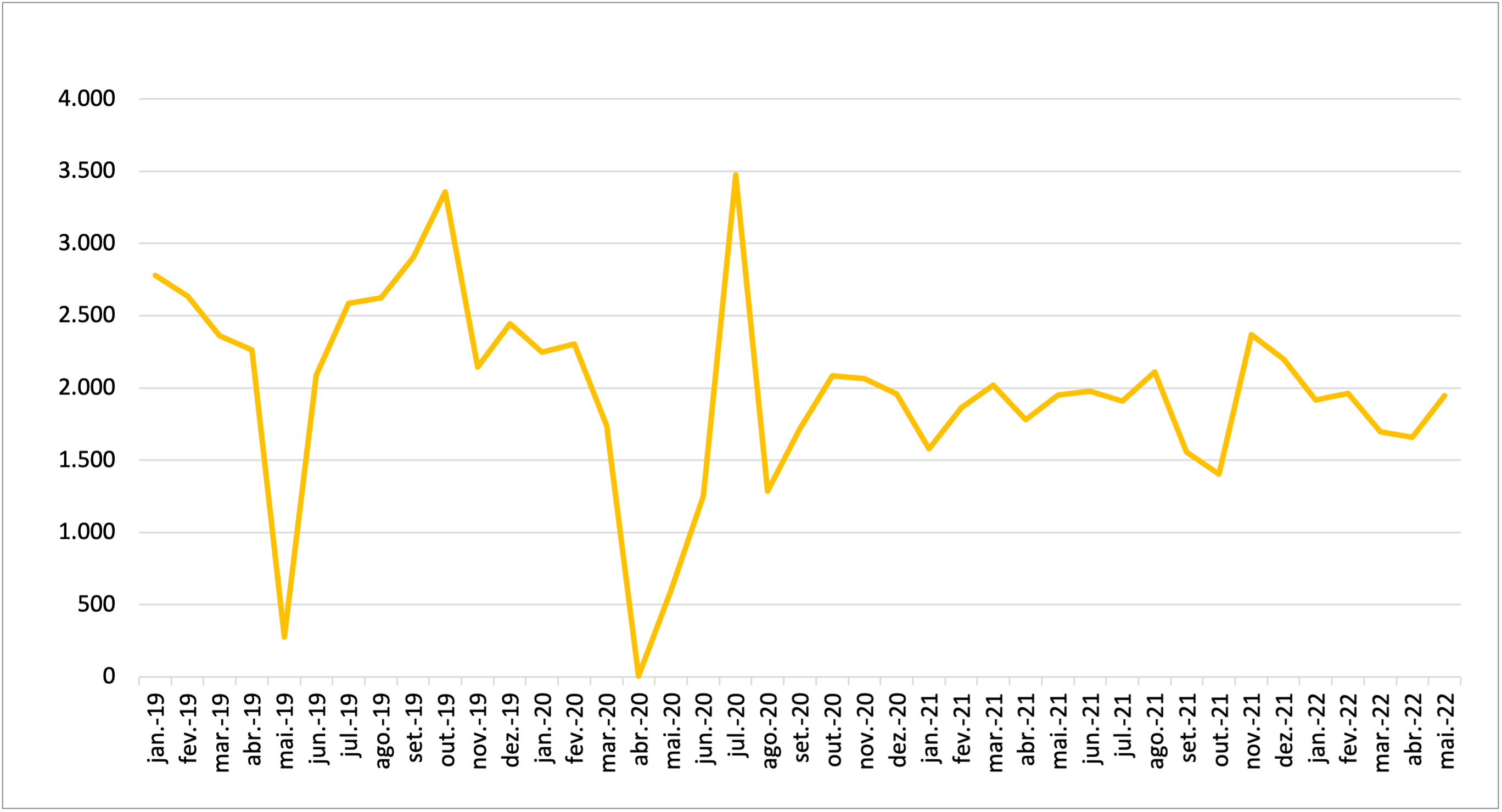
Source: OBMigra (2022), based on data from the General Coordination of Labor Immigration (CGIL).
GRAPH 2
Number of permits granted, by month and education level - Brazil, April and May/2022.
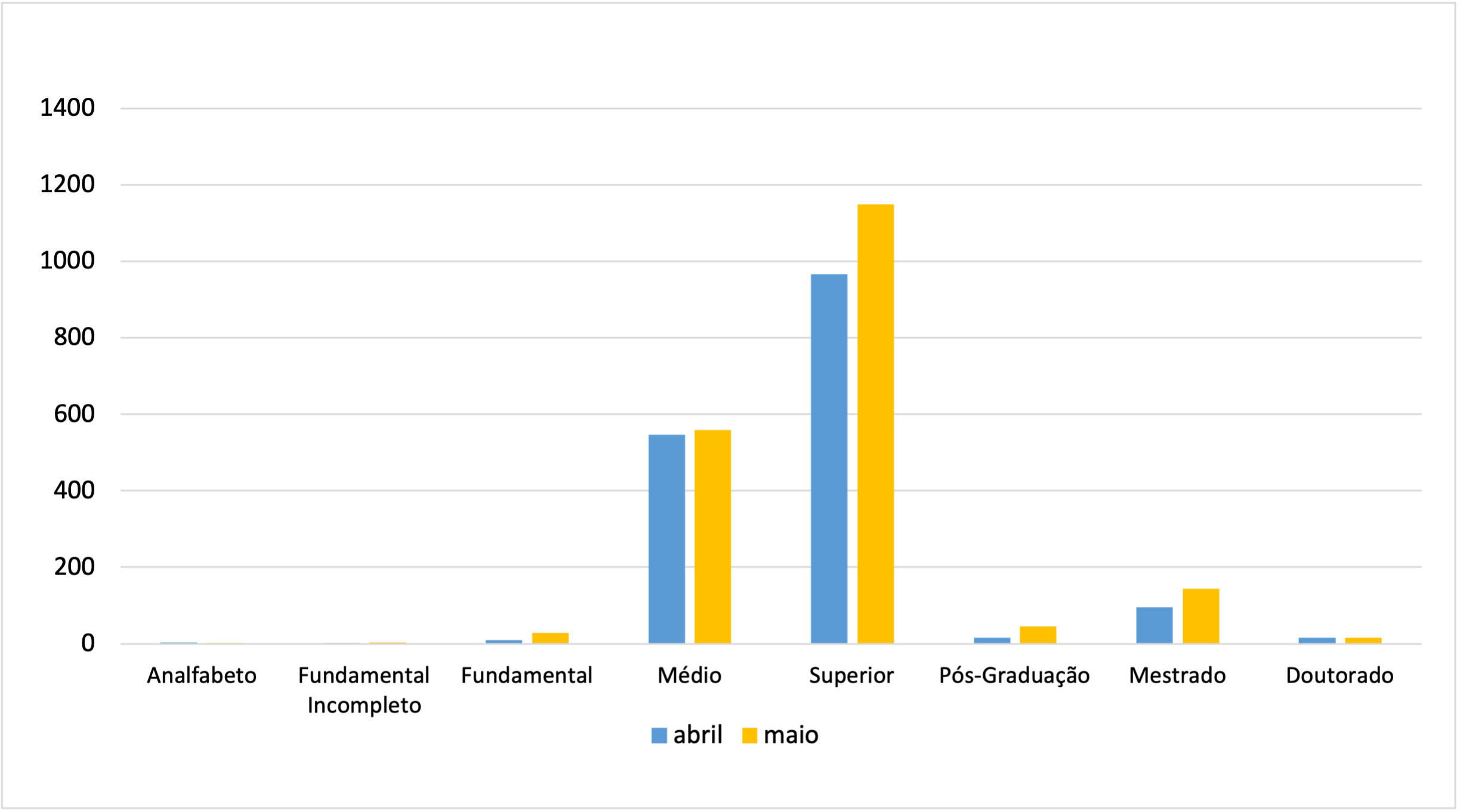
Source: General Coordination of Labor Immigration / Ministry of Justice and Public Security, May 2022.
GRAPH 3
Number of permits granted for skilled workers, by month and sex, according to main countries - Brazil, April and May 2022.
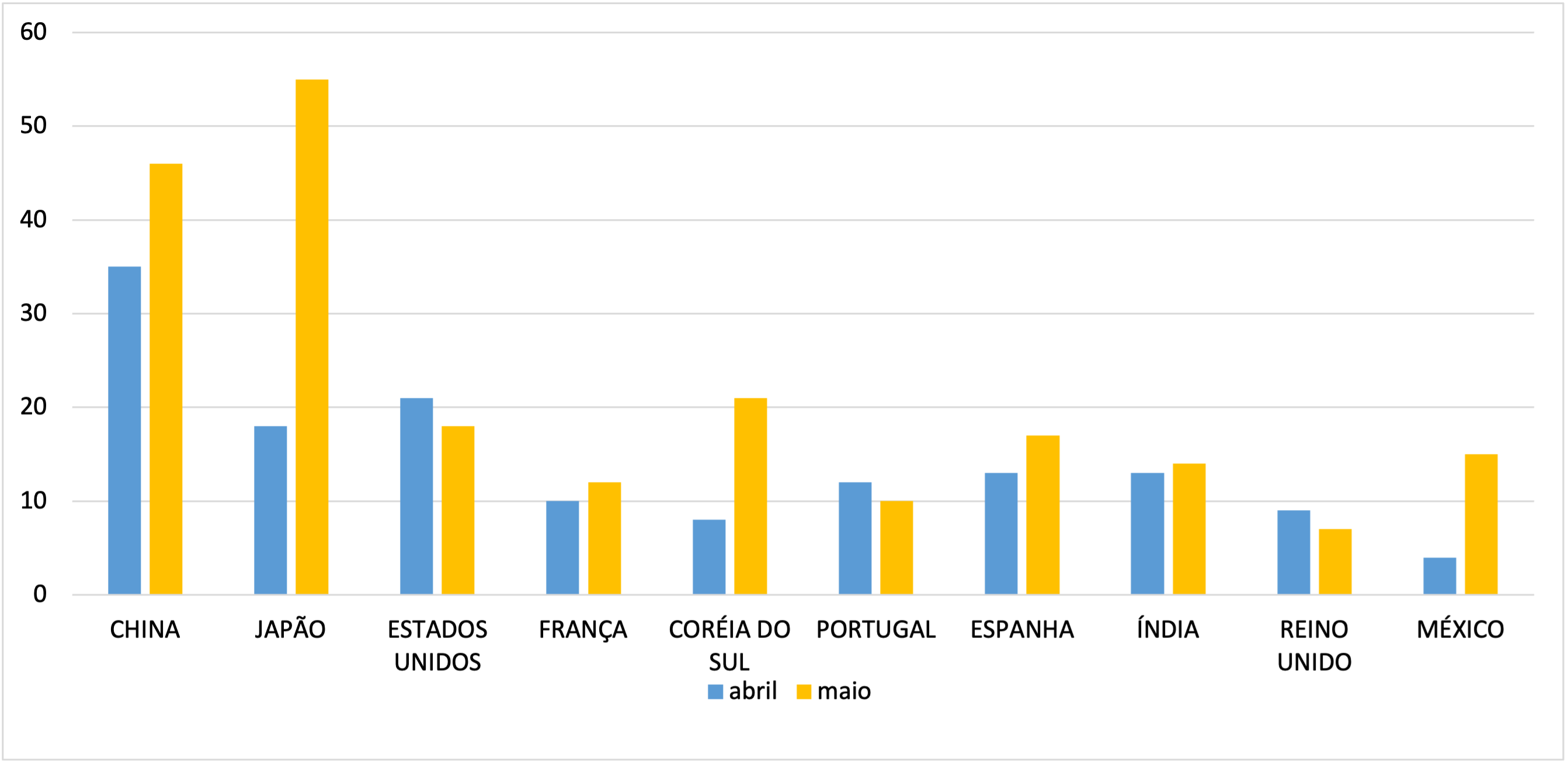
Source: General Coordination of Labor Immigration / Ministry of Justice and Public Security, May 2022.
CTPS/RAIS/NOVO CAGED
Harmonized database Work and Social Security Card (CTPS)/Annual Report of Social Information (RAIS)/New General Register of Employed and Unemployed Persons (CAGED)
In April, the number of immigrants moving into the formal labor market was slightly lower than in the previous month. Similarly, the number of jobs created
was lower than in March, but much higher than in April 2021 (Graph 4).
The Southern Region remained the leader in creating the highest number of vacancies for immigrant workers, followed by the Southeast Region (Map 1).
Another notable characteristic worth highlighting is the main cities in job generation, with Curitiba/PR and São Paulo/SP standing out (Graph 5).
GRAPH 4
Jobs created for immigrants in the formal labor market, by month - Brazil, 2019/2022
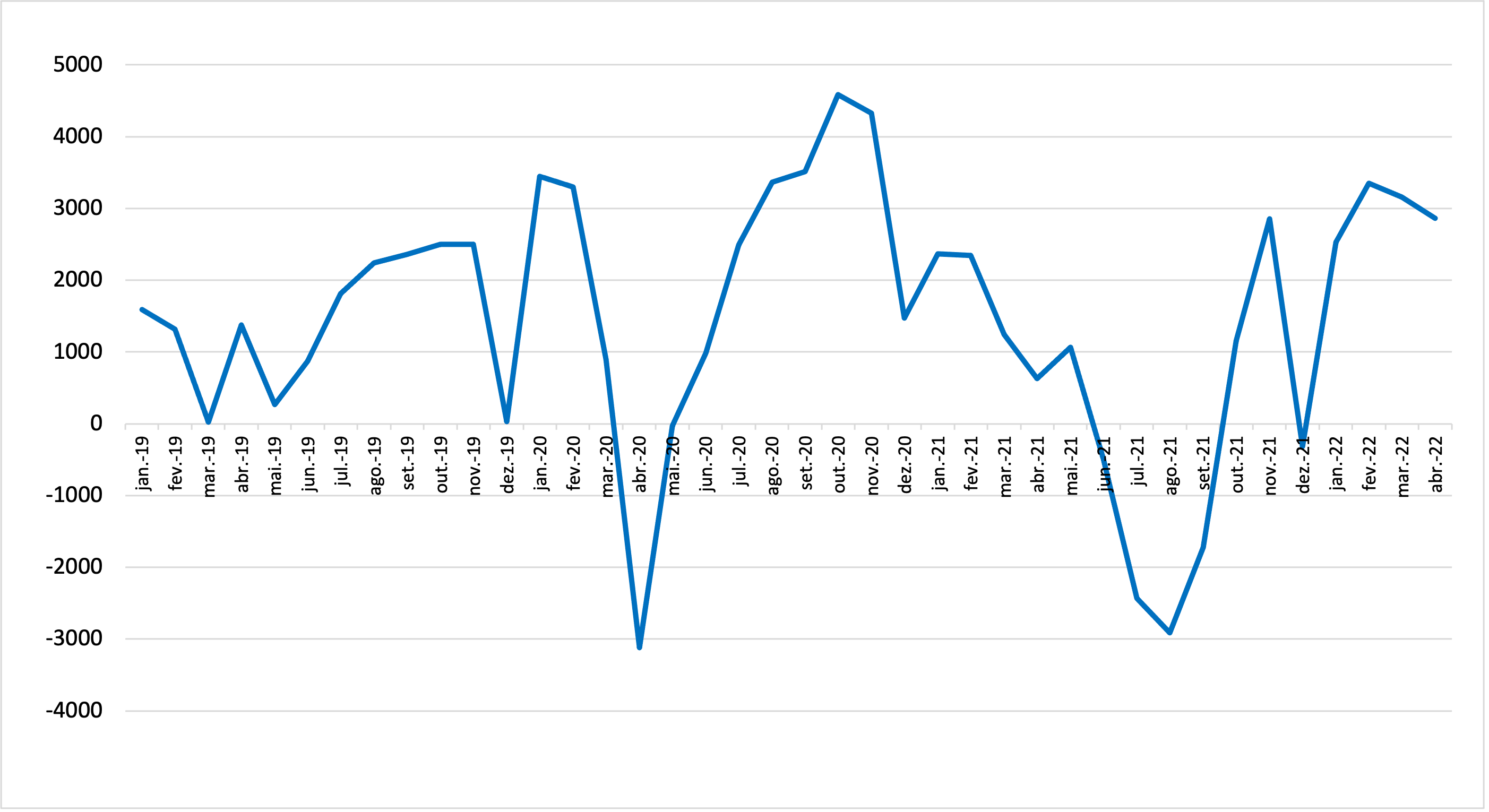
Source: OBMigra (2022), based on data from the harmonized database RAIS-CTPS-CAGED and the Digital System of Tax, Social Security and Labor
Obligations (eSocial).
GRAPH 5
Job positions created for immigrants in the formal labor market, according to main cities, Brazil, April 2022.
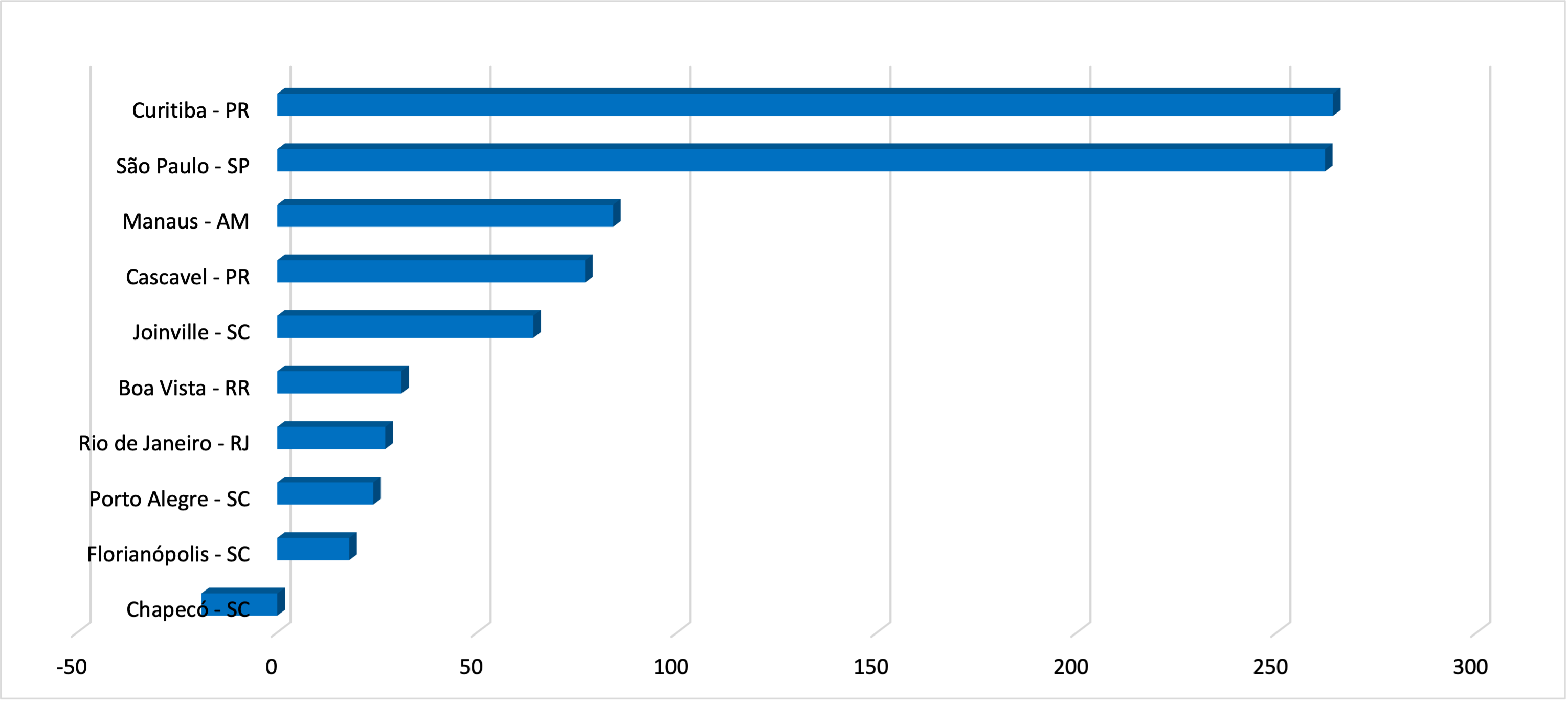
Source: OBMigra (April 2022), based on data from the Ministry of Economy, Harmonized database RAIS-CTPS-CAGED
MAP 1
Number of jobs created for immigrants in the formal market, according to Regions - Brazil, April 2022.
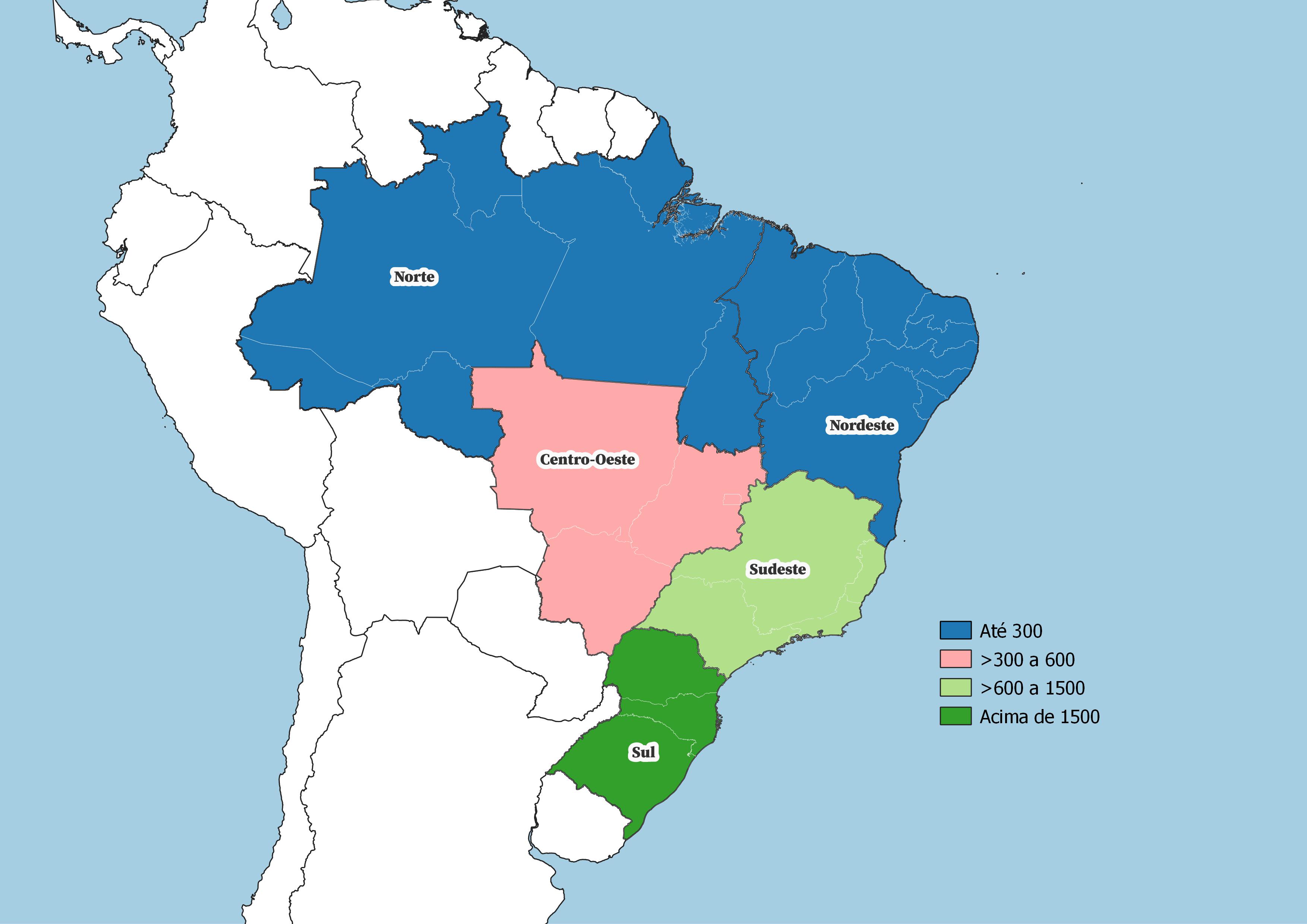
Source: OBMigra (April 2022), based on data from the Ministry of Economy, Harmonized database RAIS-CTPS-CAGED
STI
STI (International Traffic System)
The cross-border movement of people in May showed a slight decrease but maintained a level of stability similar to what has been observed since
December 2021. However, it is worth noting that despite the tendency for an increase in movement records, the numbers are still significantly lower when
compared to the period before the SARS-COV-2 pandemic (Graph 6).
Another characteristic that persisted was the negative balance in the movement across borders, with the number of exits surpassing the number of entries,
particularly among Brazilians and tourists (Graph 7).
GRAPH 6
Cross-border movements, by month of registration, Brazil 2019/2022
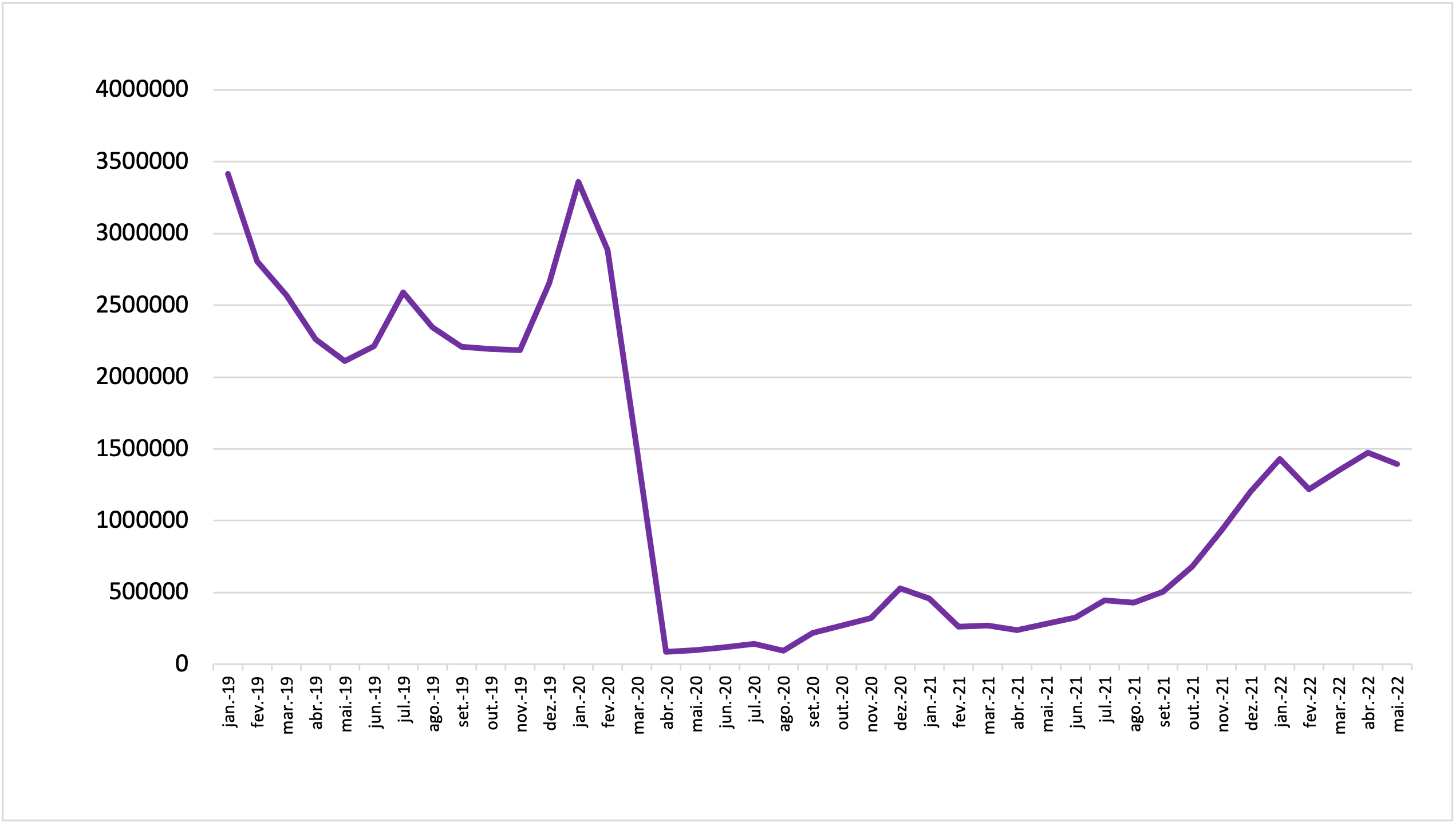
Source: OBMigra (2022), based on data from the Brazilian Federal Police, International Traffic System (STI).
GRAPH 7
Balance of cross-border movements of people, according to typology - Brazil, May 2022.
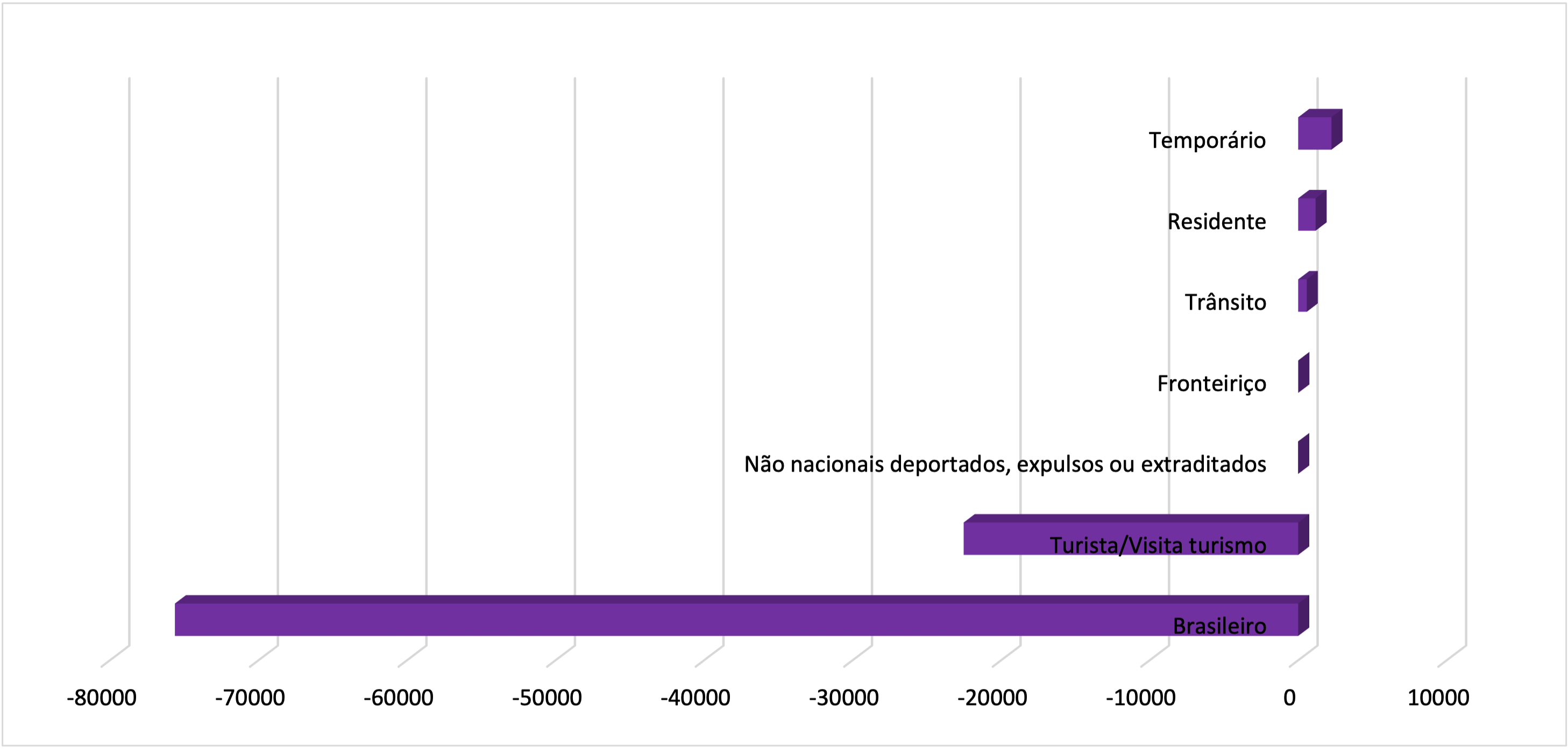
Source: OBMigra (May 2022), based on data from the Brazilian Federal Police, International Traffic System (STI).
SISMIGRA
SisMigra (National Migration Registry System)
The number of residence registrations in the month of May was slightly higher than in April (2.5%) and significantly higher in the 12-month comparison
(95.2%), indicating a sustained growth trend in the regularization of immigrants (Graph 8).
The lower volume of Venezuelan immigrants has led to a slight reduction in the number of children and registrations in the state of Roraima. The Bolivian
immigration was the standout feature, nearly doubling compared to April. In turn, the Ukrainian registrations were stable at around 114 (Graph 9 and Map
2).
GRAPH 8
Number of immigrant registrations, by month of registration - Brazil, 2019/2022
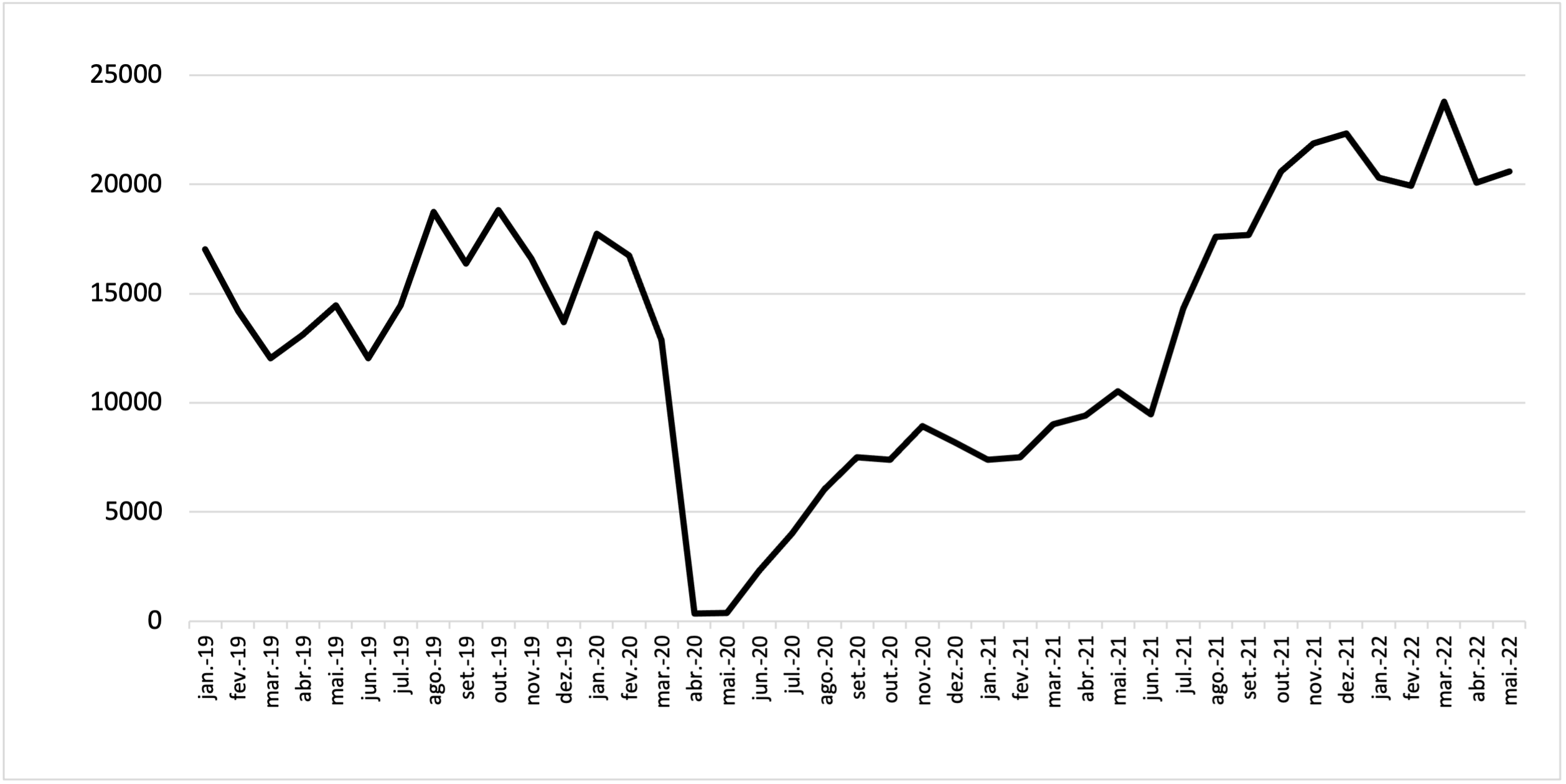
Source: OBMigra (2022), based on data from the Brazilian Federal Police, National Migration Registry System (SISMIGRA).
GRAPH 9
Number of migrant registrations, according to month of registration and main countries - Brazil, April and May 2022.
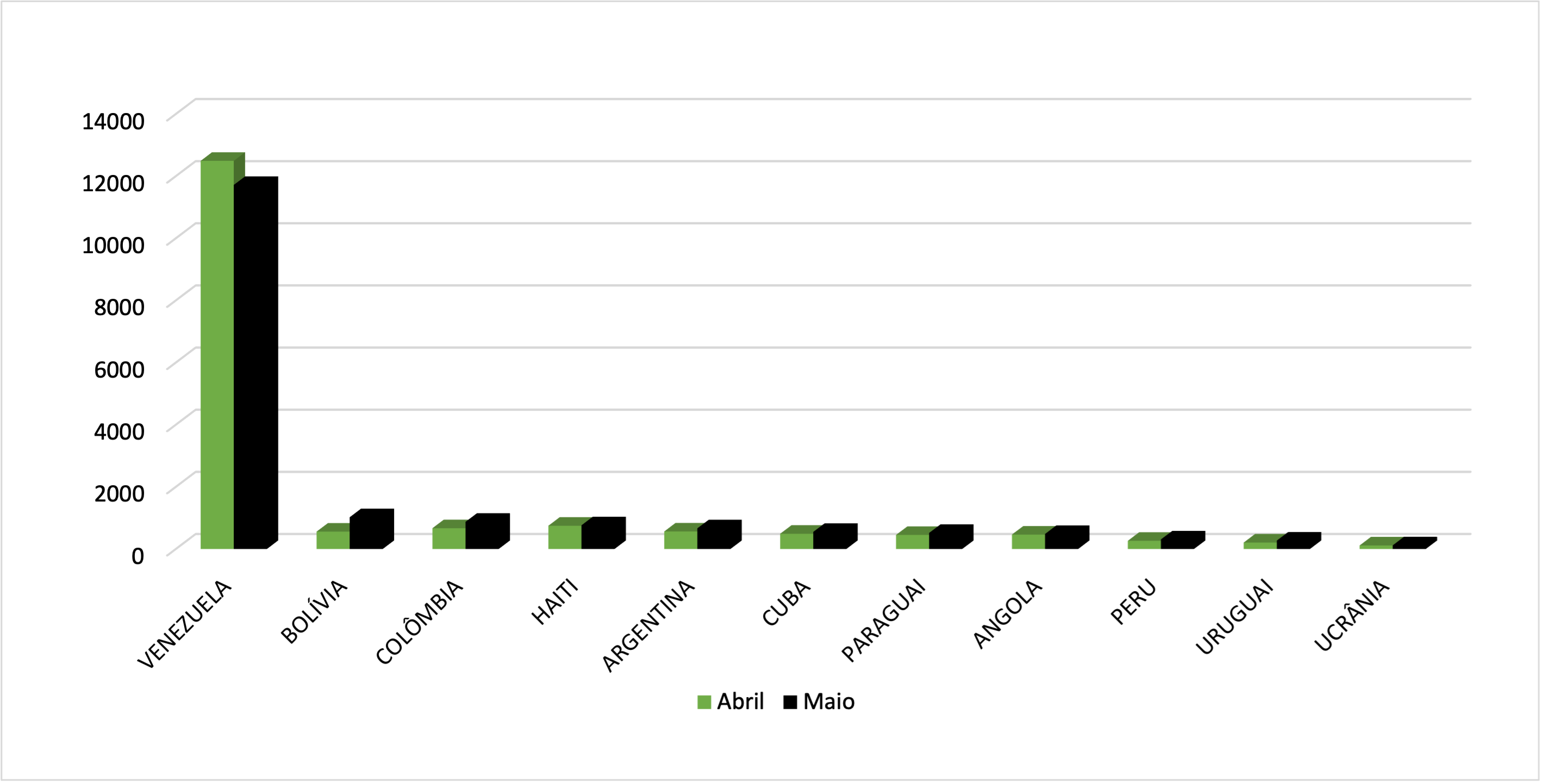
Source: OBMigra (May 2022), based on data from the Brazilian Federal Police, National Migration Registry System (SISMIGRA).
MAP 2
Number of immigrant registrations, by main countries of birth, May 2022.

Source: OBMigra (May 2022), based on data from the Brazilian Federal Police, National Migration Registry System (SISMIGRA).
STI-MAR
STI-MAR (International Traffic System - Warning and Restrictions Module)
In May, the number of applications for refugee status increased by approximately 15% compared to the previous month and by 260% compared to the same
period last year. However, these numbers are still well below those observed in the pre-pandemic period (Graph 10).
For the second consecutive month, Haitians are not among the top nationalities requesting recognition of refugee status. The highlight continued to be
Venezuelans, followed by Angolans, who have been increasing their participation month by month, and Cubans (Map 3).
Pacaraima was the primary port of entry for applicants in the month of May, followed by Guarulhos/SP, Assis Brasil/AC, and São Paulo/SP (Graph 11).
GRAPH 10
Number of applications for recognition of refugee status, by month of registration - Brazil, 2019-2022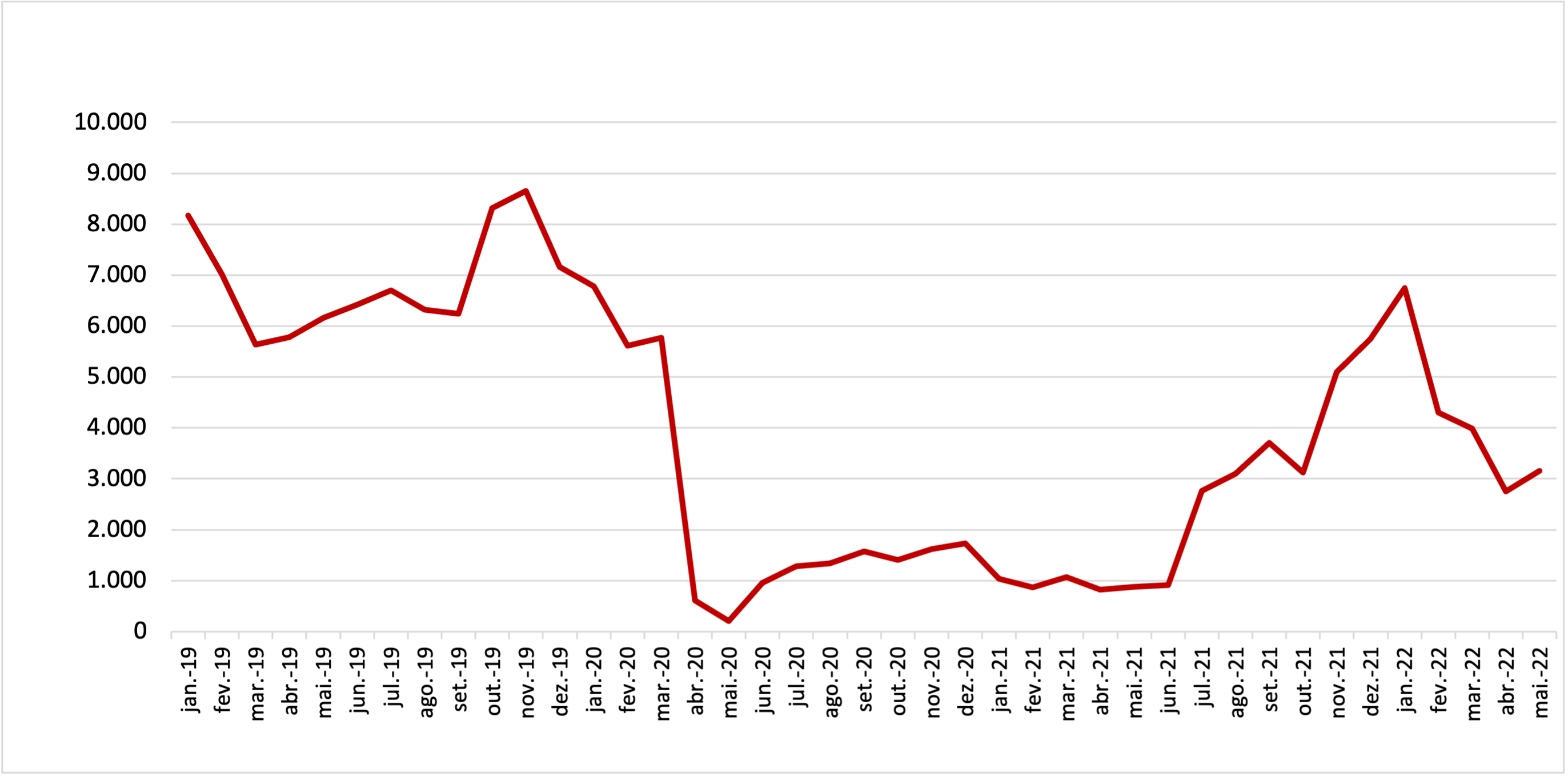
Source: OBMigra (April 2022), based on data from the Brazilian Federal Police, Asylum Claims.
GRAPH 11
Number of applications for recognition of refugee status, by main municipalities - Brazil, May 2022.
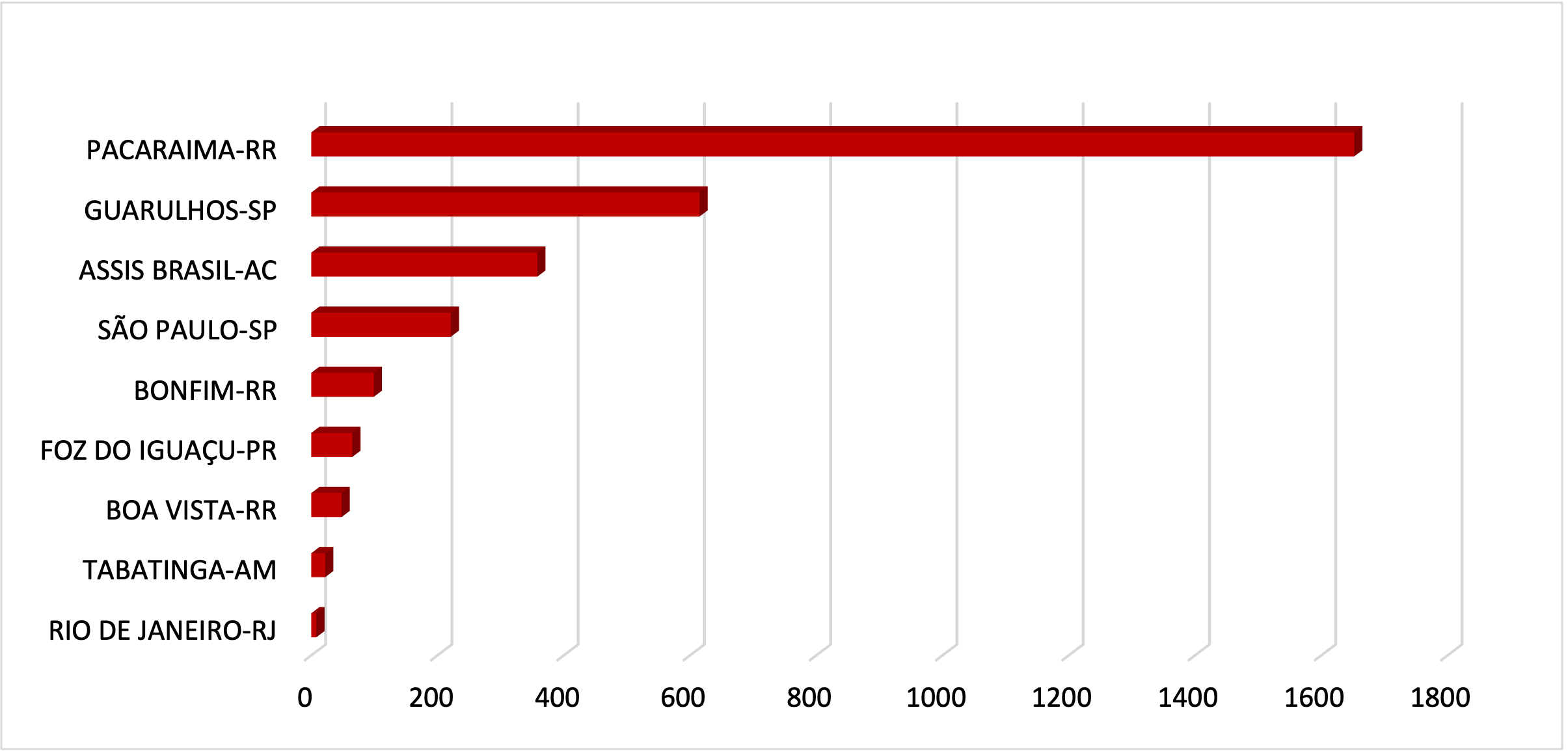
Source: OBMigra (April 2022), based on data from the Brazilian Federal Police, Asylum Claims.
MAP 3
Number of applications for recognition of refugee status, by main countries of nationality- Brazil, May 2022.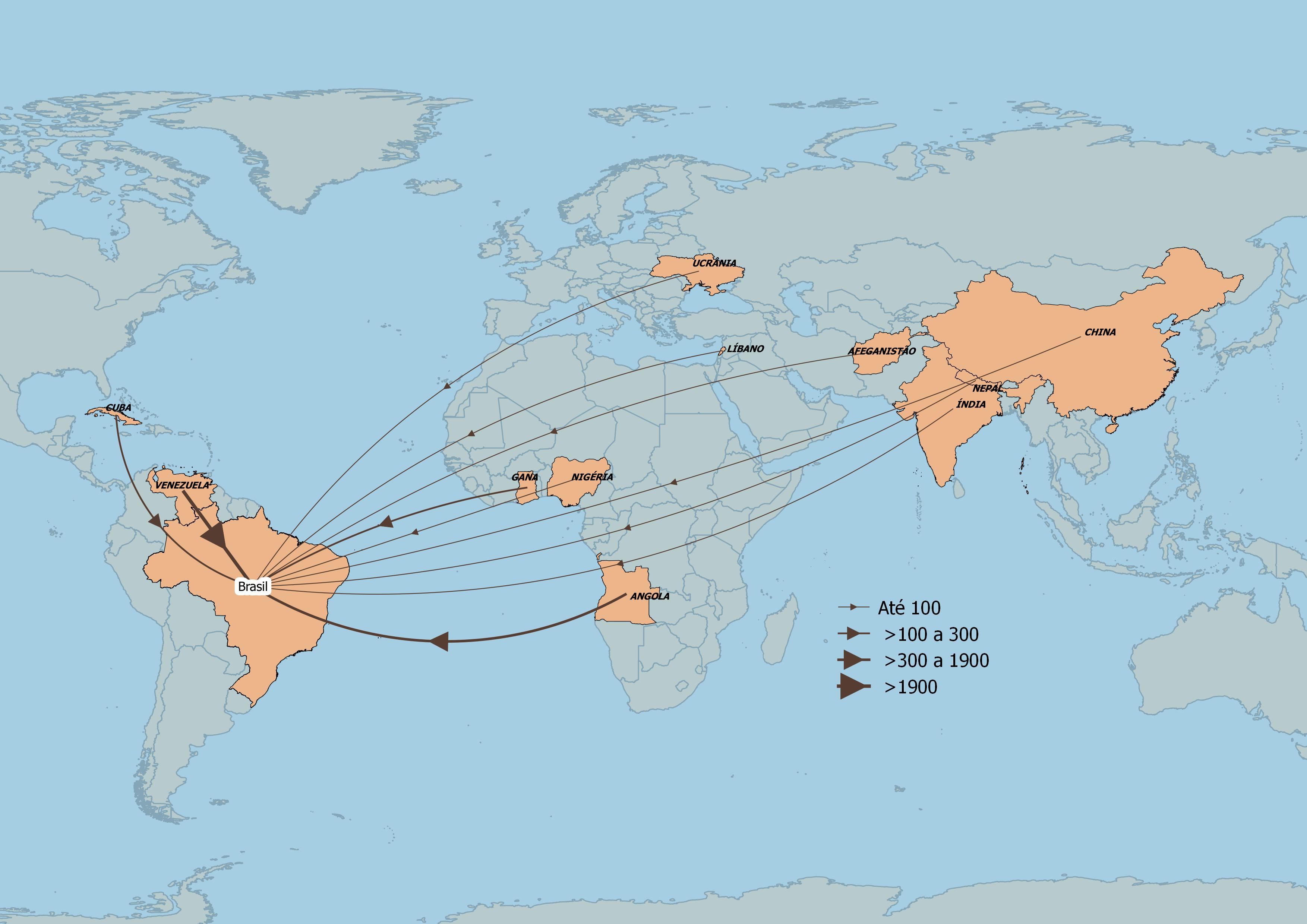
Source: OBMigra (May 2022), based on data from the Brazilian Federal Police, Asylum Claims.
COMO CITAR
The reproduction of this text and the data contained therein is permitted, provided that proper citation of the source is included. Reproduction for
commercial use is prohibited.
How to cite this text:
| CAVALCANTI, L; OLIVEIRA, T; FURTADO, A; DICK, P; QUINTINO, F; GUIMARÃES, B. Acompanhamento de fluxo e empregabilidade dos imigrantes no Brasil: Relatório Mensal do OBMigra Ano 3, Número 5, maio de 2022/ Observatório das Migrações Internacionais; Brasília, DF: OBMigra, 2022. Disponível em: https://portaldeimigracao.mj.gov.br/pt/dados/relatorios-mensais |














